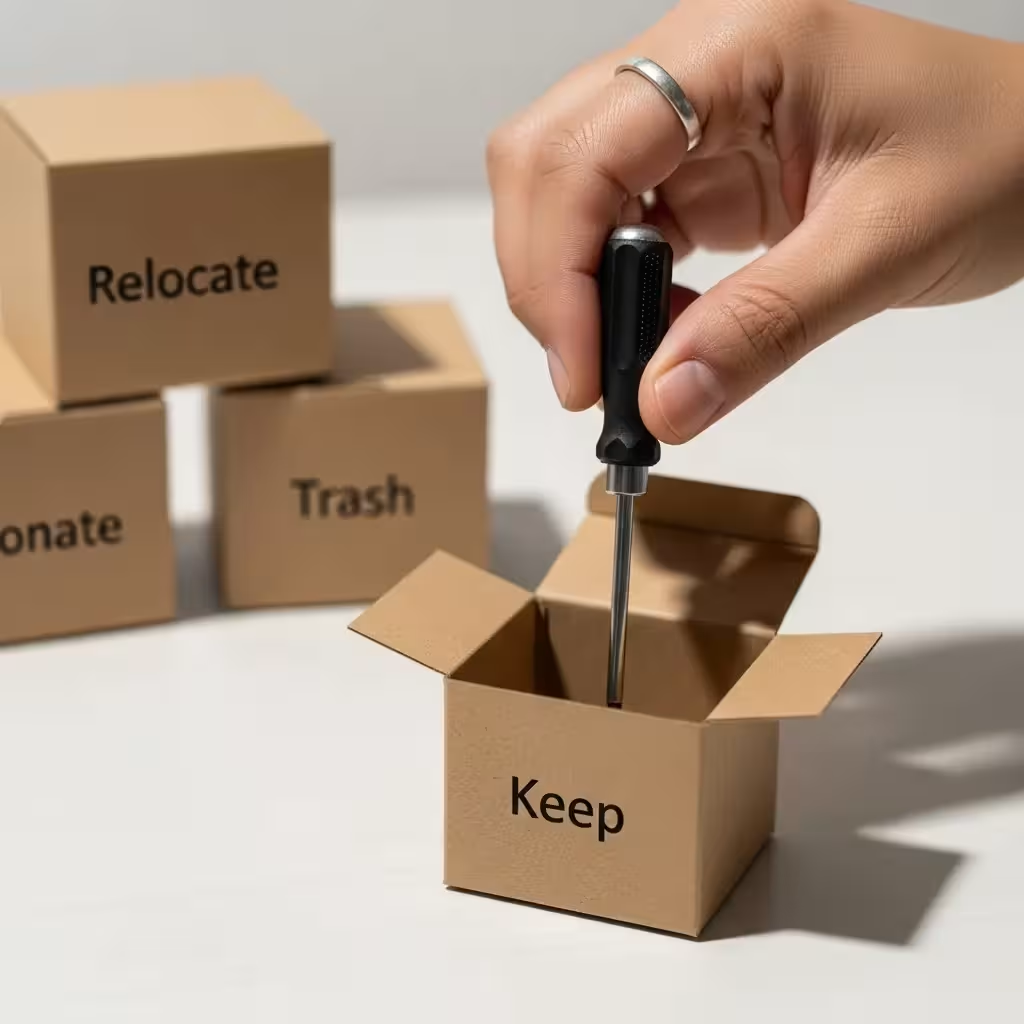
Step 3: The Edit – Making Confident Decisions
This is where the transformation truly begins. With your pile of items on the counter and your four sorting boxes at the ready, it’s time to edit your collection. The key is to touch each item only once and make a quick, confident decision. Don’t get bogged down in “what ifs” or nostalgia. We’re aiming for function and utility.
We’ll use the 4-Pile Method to make this process clear and organized. Pick up one item at a time and place it into one of these four categories:
1. Keep: These are items that are useful, in good working order, and genuinely belong in a high-frequency utility drawer. We’ll define exactly what these are in the next section.
2. Relocate: These are items that are useful but don’t belong in this specific drawer. For example, extra toiletries belong in the bathroom, craft supplies belong with other crafts, and office supplies belong in the office. The “Relocate” box is for items that need to find a proper home elsewhere.
3. Donate: This is for items that are in good condition but you no longer need. An extra set of measuring spoons or a working phone charger for a device you no longer own could be useful to someone else.
4. Recycle/Trash: This pile is for anything that is broken, expired, dried up, or simply trash. Be ruthless here!
To help you decide which pile an item belongs in, use these simple decision-making rules:
The 20/20 Rule: If an item can be replaced for less than $20 and in less than 20 minutes, and you haven’t used it recently, you can probably let it go. This is great for random cables or obscure kitchen gadgets.
The 90/90 Rule: Have you used this item in the last 90 days? If not, will you realistically use it in the next 90 days? If the answer to both is no, it likely doesn’t deserve a spot in this prime-real-estate drawer.
Now, let’s apply this logic to common junk drawer culprits:
Pens, Pencils, and Markers: Test every single one on a piece of scrap paper. If it doesn’t write smoothly, throw it out. Keep only a handful of your favorites.
Rubber Bands, Paper Clips, and Twist Ties: They multiply! Keep a small, contained collection. A golf ball-sized bundle of rubber bands is likely more than enough.
Batteries: Check for any signs of corrosion (a white, chalky substance). Corroded batteries can damage devices and should be disposed of carefully. For proper disposal guidance for all battery types, it’s best to check with your local waste authority or consult resources from the U.S. Environmental Protection Agency (EPA). Keep only the common sizes you use regularly (like AA and AAA) in the drawer.
Keys: Do you know what every key opens? If not, put them in a small bag labeled “Mystery Keys.” Give yourself a deadline—say, 30 days—to test them. If they remain a mystery after that, it’s safe to discard them.
Cords and Chargers: The dreaded tech spaghetti. If you don’t immediately know what a cord charges, it’s a candidate for recycling. Most communities have e-waste recycling programs for these items.
Expired Items: Look for expiration dates on old packets of sauce, coupons, or single-dose medications. If it’s expired, it’s trash.
Work through your pile systematically. Once you’re done, immediately take the trash to the trash can, the recycling to the recycling bin, and put the donate box in your car. Deal with the “Relocate” box right away by walking those items to their new, proper homes. All you should have left is the small, curated pile of “Keep” items.

















